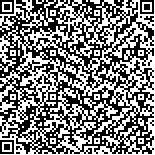| 本文已被:浏览 2742次 下载 738次 |

码上扫一扫! |
| 大豆荚数性状相关QTL的加性、上位性及QE互作效应分析 |
|
杨喆1,2, 孙亚男1, 齐照明1, 辛大伟1, 蒋洪蔚3, 何琳3, 栾怀海3, 刘春燕3, 钟鹏2, 刘丽君2, 胡国华3, 陈庆山1, 王凤义1
|
|
|
| (1.东北农业大学 农学院, 哈尔滨 150030;2.黑龙江省农业科学院 大豆研究所, 哈尔滨 150086;3.黑龙江省农垦育种中心, 哈尔滨 150090) |
|
| 摘要: |
| 本研究利用Charleston×东农594得到的147个F2:14-F2:19重组自交系群体,对11个环境条件下大豆荚数性状相关QTL的加性、上位性及其与环境互作效应进行了分析。在6年11个不同遗传背景条件下的多环境联合分析中定位了11个QTL具有加性效应,其加性(A)贡献率和AE互作贡献率都是微效的。联合分析同时定位到20对QTL具有上位效应,并发现上位QTL的2种作用模式,一种是同一连锁群上2个QTL间的上位性互作,另一种是不同连锁群上2个QTL间的上位性互作。鉴定出9个具有加性效应的QTL能在多个环境条件下被检测到,17对具有上位性效应的QTL能在多个环境条件下被检测到,部分QTL的上位性效应解释的表型变异大于5%。这些在不同环境或不同遗传背景下检测到的QTL,可作为大豆荚数相关性状改良的候选标记,用于分子标记辅助选择或图位克隆。 |
| 关键词: 大豆 荚数性状 加性 上位性 QE互作效应 |
| DOI:10.11841/j.issn.1007-4333.2013.03.001 |
| 投稿时间:2012-10-17 |
| 基金项目:农业行业科技项目(200903003); "十二五"国家科技支撑计划项目(2011BAD35B06-1); 现代农业产业体系项目(CARS-04-02A); 黑龙江省普通高等学校新世纪优秀人才培养计划项目(1252-NCET-004) |
|
| Analysis of additive effect, epistatic and QE interaction effectfor QTL of pod number traits in soybean |
|
YANG Zhe1,2, SUN Ya-nan1, QI Zhao-ming1, XIN Da-wei1, JIANG Hong-wei3, HE Lin3, LUAN Huai-hai3, LIU Chun-yan3, ZHONG Peng2, LIU Li-jun2, HU Guo-hua3, CHEN Qing-shan1, WANG Feng-yi1
|
| (1.Agronomy College, Northeast Agriculture University, Harbin 150030, China;2.Soybean Research Institute, HeiLongjiang Academy of Agricultural Sciences, Harbin 150086, China;3.Land Reclamation Research and Breeding Center of Heilongjiang Province, Harbin 150090, China) |
| Abstract: |
| The objective of this research is to identify QTL with additive effect and epistatic effect,and analyze the effects of additive QTL by environment (AE) interactions and epistatic QTL by environment (AAE) interactions in eleven environments over six years.The population of F2:14-F2:19 Recombination Inbred Lines (RILs),derived from the cross between Charleston and DongNong594,was used to construct the linkage groups with Simple Sequence Repeat (SSR) markers in present study.11 additive effect QTLs (A) were identified in the conjoint analysis of 11 environments,the phenotypic variation explanations for these additive QTLs were more microefficient than that of the main effect in these additive QTLs.20 pairs of epistatic QTLs (AA) were also identified,two patterns were found between the epistatic QTLs,one was two epistatic QTLs interacted on the same linkage group,another was two epistatic QTLs located on different linkage groups interacted each other.Nine additive QTLs and 17 pairs of epistatic QTLs could be identified among multiple environments at the same time,More than 5% of the phenotypic variation could be explanted by parts of the epistatic QTLs.Therefore,the QTLs identified among different environments or different background can be used as the candidate makers for the improvement of the pod number traits in soybean in maker assisted selection (MAS) or mapping clone. |
| Key words: soybean QTL pod number traits additive effect epistatic effect QE interaction effect |